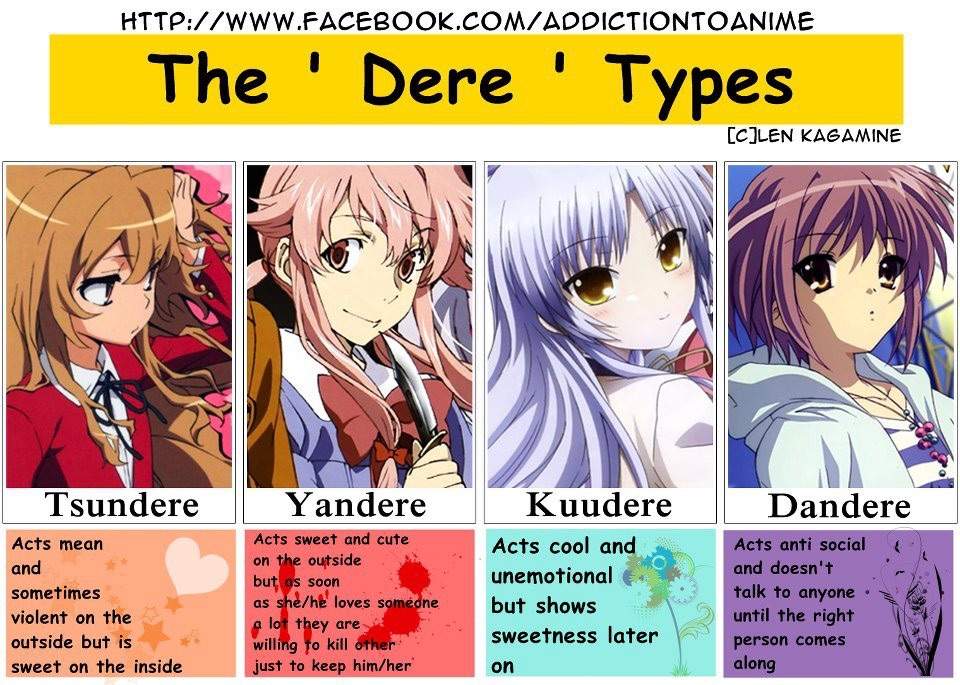Ever found yourself captivated by a character who seems to embody a whirlwind of emotions, a perplexing mix of shyness, affection, and perhaps a touch of playful aggression? The world of anime and manga is rife with such captivating personalities, and at the heart of understanding these multifaceted characters lies the concept of "dere," a term that unlocks the secrets to their behavior and romantic inclinations.
The term "dere," derived from the Japanese "deredere" (デレデレ), a mimetic word for being lovestruck and overly affectionate, serves as a cornerstone in understanding character archetypes within the anime and manga fandom. It describes how characters behave towards their love interests, showcasing the evolution of their emotions before and after falling in love. It is not simply a label; it’s a window into the soul of these characters, revealing the nuances of their affections and the ways they express their innermost feelings. Think of it as the emotional DNA that dictates their interactions and reactions within the complex web of relationships.
| Attribute | Description |
|---|---|
| Origin | Japanese anime and manga fandom |
| Root Word | Deredere (デレデレ), meaning "lovey-dovey" or "overly affectionate" |
| Definition | Describes a character's behavior towards their love interest, particularly how they express affection before and after falling in love. |
| Associated Media | Anime, manga, visual novels, and related Japanese pop culture. |
| Related Terms | Tsundere, Yandere, Himedere, Dandere, Kuudere, etc. (various "dere" types that specify particular character traits). |
| Function | Helps to categorize and understand character personalities and romantic dynamics within fictional works. |
| Reference | Wikipedia - Dere Types |


